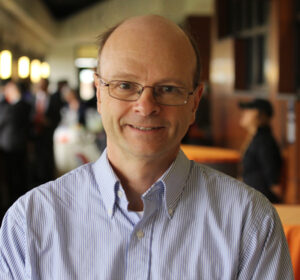Vice President and Principal Engineer, Creare, Inc.
Dr. Magari received undergraduate degrees in mechanical and aerospace engineering, electrical engineering and his master’s degree and doctorate in aerospace engineering from Syracuse University. As a senior, he was selected as a Syracuse University Scholar and the most outstanding senior in the U.S. by the National Aerospace Engineering Honor Society. His graduate work at Syracuse focused on gas turbine heat transfer research involving the development of advanced thin-film heat transfer gauge arrays. After completing his doctorate, Patrick joined the Department of Engineering Science at Oxford University as an NSF/NATO Fellow. While at Oxford, his areas of interest included the experimental study of boundary-layer transition at simulated gas turbine conditions and the development of advanced instrumentation for boundary layer transition detection including large arrays of miniature hot-film gauges, high‑frequency response pressure transducers, and liquid crystals. Patrick has worked at NASA Glenn Research Center performing gas turbine research, the German DLR flight testing aircraft, and JDR Systems developing fighter aircraft weapon delivery systems.
Currently, Patrick is a Principal Engineer and the President of Creare, an engineering research and development firm located in Hanover, NH. Creare develops a wide variety of advanced technology for commercial and government applications including spacecraft hardware used on the Mars Curiosity rover and the Hubble Space Telescope, laser-based manufacturing inspection tools used to construct the Joint Strike Fighter (F-35) and advanced systems used for the launch and recovery of aircraft on Navy aircraft carriers. At Creare for 30 years, Patrick has led numerous projects ranging from small consulting efforts to large multimillion-dollar, multiyear development efforts. His work has included a broad spectrum of engineering analysis, prototype development, and testing. His general areas of interest include novel mechanical devices, instrumentation, bioengineering, fluid mechanics, aerodynamics, turbomachinery, materials processing, and cryogenic systems.
His work has included advanced power systems for underwater vehicles; nuclear power systems for spacecraft; novel bubble detection and sizing instrumentation for characterizing decompression sickness in divers and astronauts; innovative gas separation systems for military, aerospace, industrial, and medical applications; and cryogenic refrigerators for use in large high-temperature superconducting motors, generators, power transmission systems, and magnets. He has published over 75 engineering research papers and has over 20 U.S. patents in addition to many international patents. Patrick has flown over 1500 parabolas on NASA microgravity aircraft testing spacecraft hardware and conducting basic science experiments associated with multiphase flow and the physiology of the human eye in microgravity.
Patrick lives on a rural 200-acre New Hampshire property in a 250-year-old house with his wife, two sons and two dogs. In his spare time, he has been building a new house high up on his property with his own hands for 20 years—It’s almost done! Patrick and his wife are avid downhill skiers and enjoy summer weekends on the water at their lake house on a nearby lake.
Favorite SU Memory:
My favorite SU memory is when Syracuse upset Nebraska, then ranked #1 in 1984.

